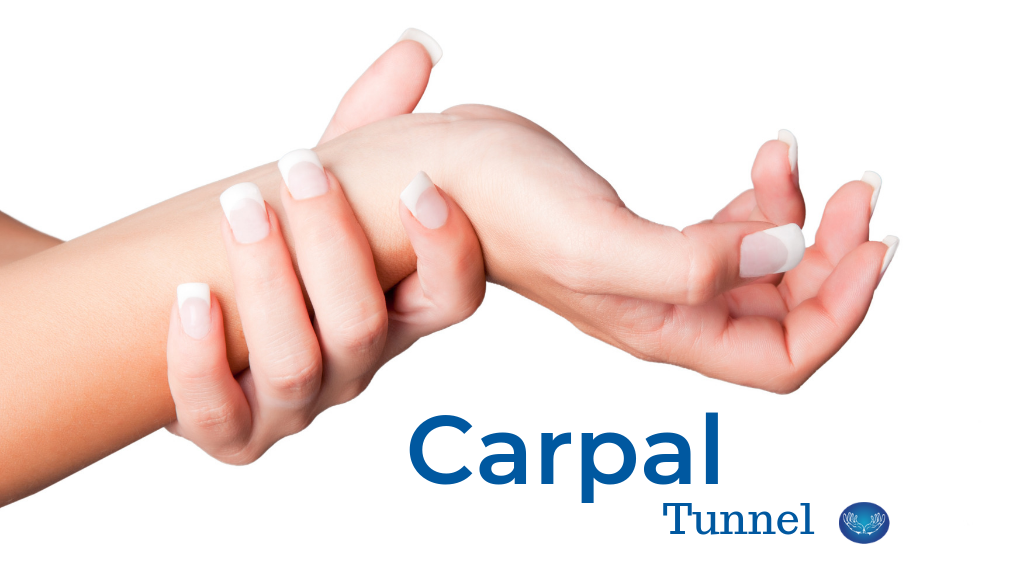Carpal Tunnel
19 November 2019
Chances are, you have heard of Carpal Tunnel Syndrome (CTS). Many Australians suffer from CTS and experience symptoms that usually start slowly and worsen over time. It may be that a friend has a feeling of tingling or pins and needles in the fingers. Or you wake up in the morning with numbness in your hands. If left untreated it can cause muscles near the base of the thumb to waste away. So here is a little more information about Carpal Tunnel and its treatment.
What is Carpal Tunnel Syndrome?
Carpal Tunnel Syndrome (CTS) can cause pain, weakness, numbness and tingling in the hand and arm. It is a result of a nerve – the median nerve – that is compressed or squeezed as it travels through the wrist – the carpal tunnel.
The carpal tunnel is a small tunnel formed by our wrist bones and a broad ligament in our palm called the flexor retinaculum ligament. When the median nerve is compressed as it travels through the carpal tunnel it affects the sensation in our hands (sensory nerve branches) and can also cause weakness (motor nerve branches).
Carpal Tunnel Causes?
Carpal Tunnel Syndrome often occurs due to a combination of factors that put excess pressure on the median nerve in the wrist. It can occur following a wrist injury that causes swelling, or an underlying medical condition that causes inflammation in the wrist reducing the available space for the median nerve and reducing blood flow and oxygen supply to the nerve. Other contributing factors include mechanical problems, overuse, repeated use of vibrating hand tools, fluid retention during pregnancy or menopause or the development of a cyst or tumor in the canal.
Carpal Tunnel Symptoms?
The most common symptom is tingling or numbness in the thumb, index, middle and/or ring fingers. Other symptoms can include pain in the hand and sometimes up the arm, swelling through the hand and wrist, loss of grip strength, and weakness in hand with tendency to drop things. Symptoms are often worse at night and may awaken people, and are often provoked by activities requiring prolonged gripping and/or wrist movement such as driving, reading, typing, and holding a phone.
Assessment for Carpal Tunnel
This will involve a history of symptoms and things that exacerbate the pain. Altered sensation and/or pain through the thumb, index, middle and ring fingers - median nerve distribution - of the hand will often indicate CTS. Therapists will use specific range of movement examinations, and strength testing to assess severity of nerve compression and rule out any other conditions or contributing factors. A nerve conduction study to be recommended to confirm diagnosis and severity of nerve compression.
Treatment for Carpal Tunnel
Conservative management of CTS is recommended as a first option. Treatment is aimed at decreasing the pressure on the nerve. As with most hand injuries and conditions early intervention is best. If you have re-occurring or persistent numbness, tingling or pain in your hands see a Hand Therapist to provide individualised treatment.
A wrist brace or splint is used to immobilize the wrist and reduce numbness and pain. When the wrist is straight the nerve can flow more freely through the tunnel. However, when the wrist is moved forward or backwards the carpal tunnel narrows and increased pressure is placed on the nerve. Night splinting is usually indicated, but you may be required to wear it during the day when symptoms arise. A custom-made thermoplastic splint including fingers may be indicated in severe cases. A Hand Therapist will be able to recommend or fabricate the most appropriate splint for your needs.
Modification of daily activities and work environment is recommended to eliminate repeated stress on hands. Avoid activities that involve holding one position for a long period of time, squeezing, vibration activities or repetitive wrist movement. Keeping the wrist straight or slightly extended when hand is in use will minimize the pressure placed on the median nerve. Take sufficient rest breaks throughout the day. Never continue an activity that causes pain.
Hand Therapists will tailor activity modification protocols to ensure you are able to continue with your life and work duties. Hand Therapists can also provide graded exercise programs including nerve stretches and tendon glides to further assist with recovery.
If you need any further advice or would like an assessment come and visit Our Team at Active Hand Therapy.
Written by Laura Zahra

